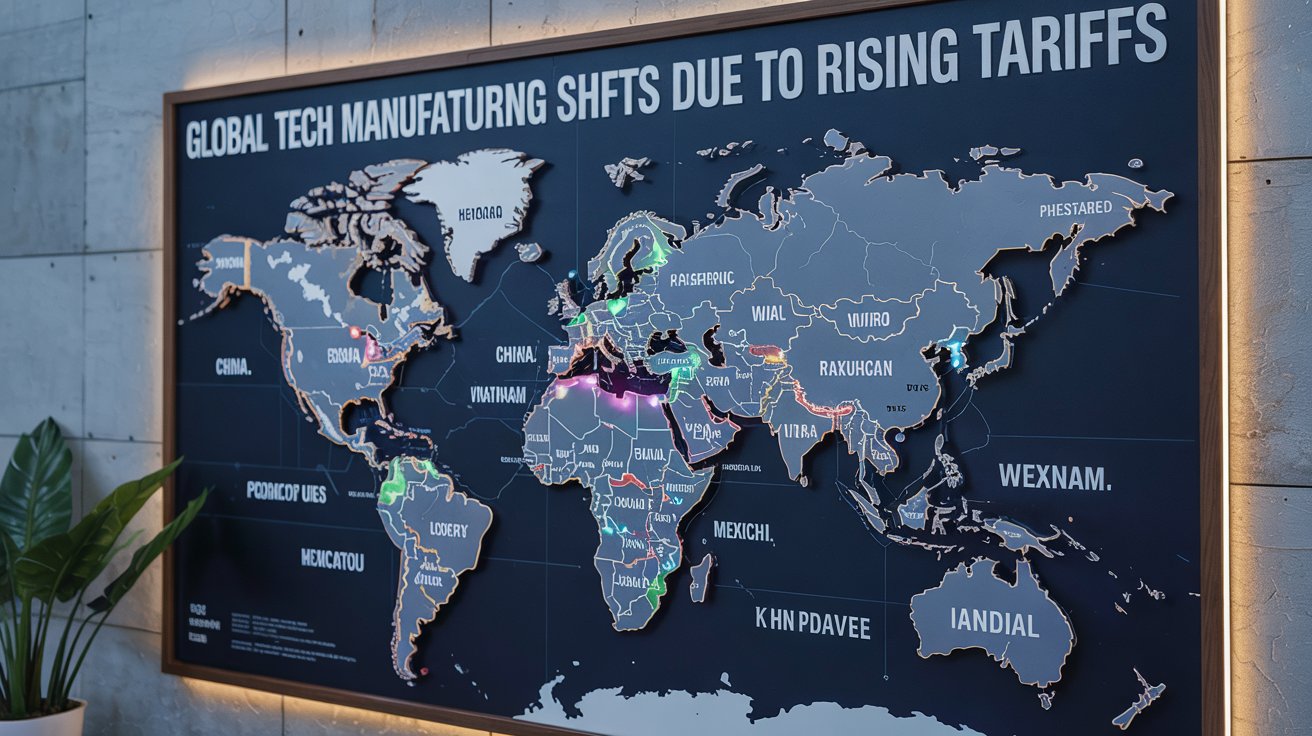Tech Industry Braces for Impact: Tariffs Set to Disrupt Supply Chains
The tech industry is facing significant disruptions due to new tariffs that are raising production costs and challenging existing supply chain structures. These tariffs are set to impact a range of goods, including key components like semiconductors and electronic parts, which are essential to the production of consumer tech products. Understanding the scope and impact of these changes will help businesses navigate the complexities of the shifting global trade landscape.
The Impact on Tech Giants
The new tariffs are creating immediate challenges for major tech companies, especially those with heavy reliance on Chinese manufacturing. For example, Apple, Dell, and Hewlett Packard (HPE) are all likely to face price increases on products like laptops, smartphones, and tablets. These companies have large production facilities in China, which are directly affected by the increased tariffs on imported goods.
To visualize the extent of the impact, consider the following:
| Company | Impact of Tariffs | Action Taken |
|---|---|---|
| Apple | Rising production costs for iPhones, MacBooks | Exploring alternative production sites in Vietnam and India |
| Dell | Higher costs for laptop and desktop production | Adjusting prices or shifting some production to Mexico |
| Hewlett Packard | Increased costs on PC components | Expanding manufacturing outside of China, such as in Taiwan and Mexico |
These companies are being forced to reevaluate their pricing models and production strategies. Price increases for consumers could be inevitable, but these companies are exploring various methods to manage costs while maintaining competitiveness.
Supply Chain Diversification: A Key Strategy
Supply chain diversification is one of the primary ways tech companies are responding to the tariff crisis. By spreading production across different countries, companies can reduce their dependence on any single source, which helps mitigate tariff-related risks.
How Diversification Helps:
- Reduced reliance on one region: With multiple manufacturing hubs, companies can avoid exposure to tariffs in one region (like China).
- Increased agility: Companies can shift production between regions more easily based on changing tariff policies.
For example, companies like HPE and Dell have moved some manufacturing to Mexico, while Apple has explored shifting more production to India and Vietnam. This geographic diversification helps minimize disruptions and reduces vulnerability to tariffs in one country.
The Rising Cost of Innovation
As production costs rise due to tariffs, the price of innovation may also slow down. Higher costs for key components like semiconductors could result in price hikes for new consumer products. The cost increases are especially noticeable in tech categories like smartphones, laptops, and gaming systems.
Here’s a breakdown of how tariffs are influencing the price of popular tech products:
| Product | Average Price Increase Due to Tariffs | Effect on Consumer Demand |
|---|---|---|
| Smartphones | 10%–15% increase | Potential decrease in demand |
| Laptops | 5%–10% increase | Slight decline in sales |
| Gaming Consoles | 7%–12% increase | Potential slowdown in sales growth |
The longer tariffs remain in place, the more likely these price increases will be passed on to consumers. Higher product costs could potentially dampen consumer spending, slowing down demand for new gadgets.
Key Strategies for Companies Moving Forward
As companies deal with the new realities of tariff impacts, several strategies are emerging to help tech firms adapt. Below are some key approaches that are expected to drive future success:
- Optimizing Production: Companies are focusing on improving production efficiency to reduce the financial impact of higher tariff costs. This includes investing in automation and better inventory management systems.
- Collaborating with New Partners: Building relationships with manufacturing partners in countries that are less affected by tariffs (such as India or Mexico) is a key strategy for tech companies. This helps companies maintain production without facing significant tariff-related risks.
- Increasing Investment in Automation: By automating more parts of the production process, tech companies can reduce labor costs and improve efficiency, helping to offset the higher costs imposed by tariffs.
Conclusion
The tech industry is undoubtedly feeling the effects of rising tariffs, and companies must find ways to adapt quickly in order to maintain competitiveness. From shifting manufacturing locations to optimizing production processes, businesses that respond to these changes with agility are more likely to weather the storm. The key to surviving and thriving in this environment will be diversification and smart investment in new technologies, such as automation, to keep costs under control.
[USnewsSphere.com / cnbc]





